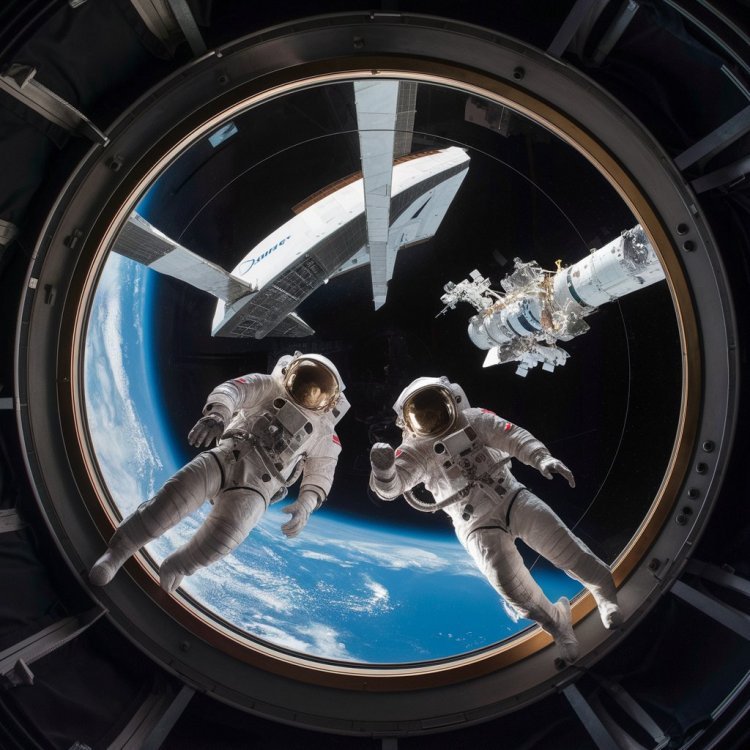Astronauts Trust Boeing's Starliner Despite Setbacks: Confidence in Safe Return
Astronauts Butch Wilmore and Suni Williams aboard the ISS trust Boeing's Starliner capsule for a safe return to Earth despite recent issues with helium leaks and thruster failures.

Astronauts Trust Boeing's Starliner Despite Setbacks: Confidence in Safe Return
Two seasoned astronauts, Butch Wilmore and Suni Williams, currently aboard the International Space Station (ISS), have expressed unwavering confidence in Boeing's Starliner spacecraft. Despite recent technical setbacks, including helium leaks and thruster failures, both astronauts believe that the spacecraft will bring them back to Earth safely.
Helium Leaks and Thruster Failures
During a recent test flight, Boeing's Starliner encountered significant issues that have extended the astronauts' stay aboard the ISS. The primary concerns were helium leaks and thruster failures, which posed serious risks to the mission's success. These problems emerged during routine checks, highlighting the complexity and inherent risks of space travel.
Helium Leaks: The helium leaks were discovered in the Starliner's propulsion system. Helium is crucial for pressurizing the fuel tanks, and any leaks can compromise the spacecraft's ability to maneuver and return to Earth safely.
Thruster Failures: In addition to helium leaks, the Starliner experienced thruster failures. The thrusters are vital for controlling the spacecraft's orientation and executing deorbit burns, essential maneuvers for re-entering Earth's atmosphere.
Confidence in Safe Return
Despite these technical challenges, Butch Wilmore and Suni Williams have expressed strong confidence in the Starliner's ability to bring them home safely. Their trust stems from rigorous testing and the collaborative efforts of NASA and Boeing to address the issues.
Butch Wilmore: "We have complete faith in the team working on the Starliner. They are some of the best minds in the industry, and we are confident they will resolve these issues."
Suni Williams: "Space travel is inherently risky, but we have trained extensively for such situations. The Starliner is a robust spacecraft, and we are optimistic about our safe return."
Testing and Investigations
NASA and Boeing are currently conducting thorough investigations and testing to replicate the thruster problems and understand the helium leaks. This process involves extensive simulations and real-time testing to identify and rectify the root causes of these issues.
Helium Leak Investigations: Engineers are meticulously examining the helium system to locate and fix the leaks. This involves pressure testing and using advanced diagnostic tools to ensure no more leaks are present.
Thruster Testing: The thruster issues are being addressed through a series of tests designed to replicate the failures under various conditions. Engineers are analyzing data from these tests to understand why the thrusters failed and how to prevent future occurrences.
Earliest Return Date: End of July
Given the complexity of the issues, the earliest projected return date for Wilmore and Williams is the end of July. This timeline allows NASA and Boeing sufficient time to complete all necessary tests and ensure the Starliner's readiness for a safe return journey.
End of July: The goal is to have the spacecraft fully tested and certified for return by the end of July. This timeline is aggressive but achievable, given the progress made in addressing the technical issues.
SpaceX Crew Delivery: Mid-August
The urgency of resolving the Starliner's issues is heightened by the impending arrival of a new crew via SpaceX in mid-August. NASA aims to have Wilmore and Williams back on Earth before this new crew arrives to avoid overcrowding the ISS and ensure smooth crew transitions.
Mid-August Deadline: The arrival of the SpaceX crew in mid-August serves as a hard deadline for the Starliner's return. This adds pressure on the teams working on the Starliner but also underscores the importance of thorough testing and verification.
Prioritizing Safety
Throughout this process, NASA and Boeing have emphasized that safety is their top priority. The mantra "failure is not an option" guides their efforts, ensuring that no shortcuts are taken and all possible risks are mitigated before the astronauts return.
Thorough Testing: Every aspect of Starliner's systems is being scrutinized and tested to ensure reliability. This includes redundant systems to handle any potential failures during the return journey.
Collaborative Effort: The close collaboration between NASA, Boeing, and the astronauts themselves is crucial. Constant communication and feedback loops ensure that all stakeholders are informed and involved in the decision-making process.
Conclusion
The confidence of Butch Wilmore and Suni Williams in Boeing's Starliner is a testament to the resilience and dedication of the teams working tirelessly to address the spacecraft's issues. Despite the setbacks, their optimism and trust highlight the spirit of space exploration and the collective effort to ensure the safe return of astronauts. As NASA and Boeing continue their rigorous testing and investigations, the world watches with anticipation, hopeful for a successful and safe return by the end of July.
What's Your Reaction?




















